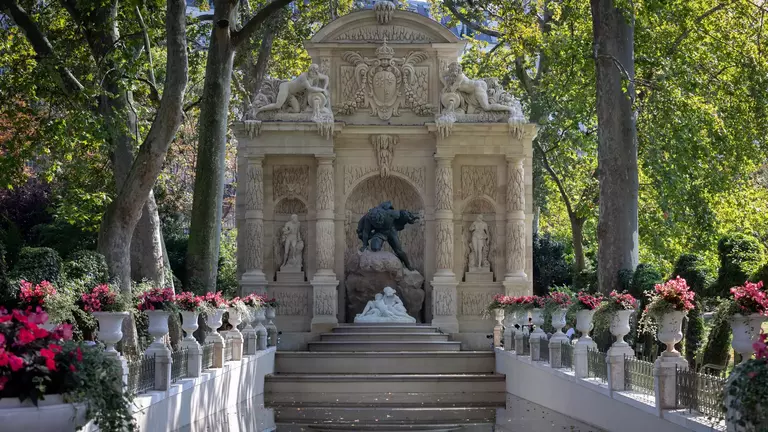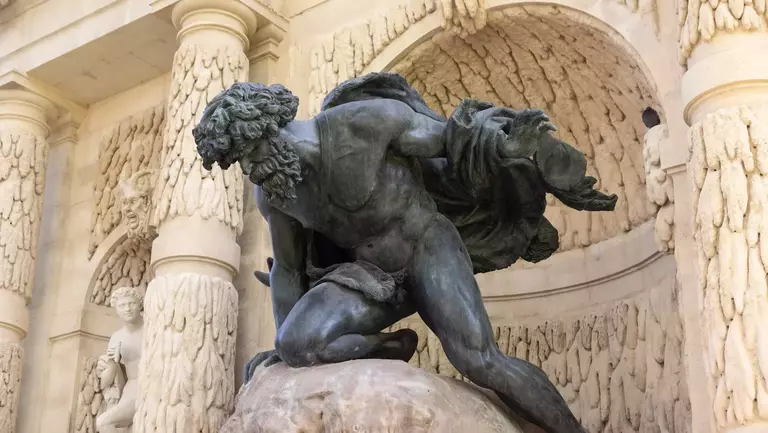In around 1630, Marie de Médicis had the Luxembourg Grotto erected in the image of the nymphaea and fountains that adorned Italian gardens, and it has been known as the "Médicis Fountain" ever since. Thomas Francine, General Superintendent of Waters and Fountains, is said to have designed it.
Chalgrin, the architect of the Luxembourg Palace, had it restored after the Revolution by the sculptors Ramey, Duret, and Talamona, and adorned the central niche with a small Venus.
In 1862, the opening of Rue de Médicis by Haussmann led to the fountain being moved and brought about thirty metres closer to the Palace.
Architect Alphonse de Gisors then built a fifty-metre-long basin in front of it and commissioned new sculptures from Ottin.


The Senate, which manages the Luxembourg Garden and ensures the conservation, maintenance, and enhancement of this exceptional heritage, undertook the restoration of the Médicis Fountain and its basins in 2020 and 2021.
The work notably included restoring the statues, replacing the rainwater drainage system, renovating the hydraulic system, and enhancing the Fountain of Leda.